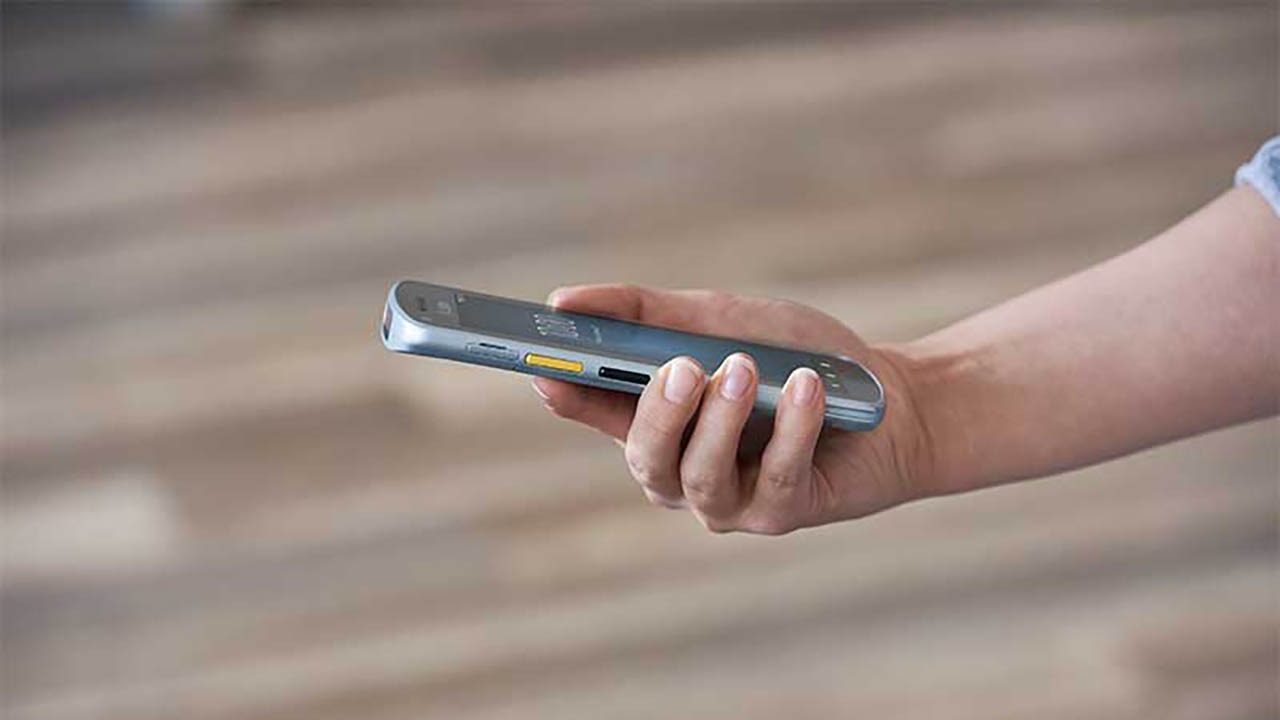
New Category of Mobile Technology Can Help Create More Efficient and Engaging Quick Service Restaurant (QSR) Experiences
If you consider for a moment what defines a fast-moving market, you may include variables like high levels of competition, a large customer base, the regular emergence of new brands, and the need for continuous innovation. All these factors are prevalent in the quick service restaurant (QSR) sector – which has long been one of the most competitive around. In fact, QSRs are among the few that have been agile enough to survive frequent lockdowns during the COVID-19 pandemic. They adapted operations in a way that allowed them to stay “open” and compliant with local regulations via drive-thru, curbside pickup and home delivery services, which is very impressive given the challenges they faced.
But let me ask you a question: how often do you see staff in coffee shops, sandwich bars, and restaurants using mobile devices? Though we’re seeing mobile technology usage increase, in part due to pandemic-prompted operational changes, many QSRs are still relying on manual processes – at least in part of their operations.
Indeed, in our always-on, hyperconnected world where mobile technologies and apps are enabling many sectors to better serve customers, it feels contradictory that pen and paper still dominate workflows in QSRs where service excellence is a prerequisite for success. This is especially true now that COVID-19 has compelled almost every business to offer contactless checkout and customer service experiences.
And pen and paper are not just used to take orders. Staff are still taking manual notes when overseeing deliveries, planning rosters, amending sell-by dates, managing inventory, and much more. It’s highly inefficient – and surprising – considering that mobility tools are availability to digitalise these actions. What’s more, with legislation around allergies becoming more demanding, creating critical audit trails with the necessary accuracy demands a move to mobile technology. It’s time for the sector to embrace mobile devices to help improve customer service, boost productivity, and enhance store efficiencies.
Fortunately, food and beverage industry decision makers agree. Today, only 39% of industry organisations use mobile computers in their operations. But, in five years’ time, 90% expect to be using them.
That’s why Zebra engineers have spent the last several months designing, developing and refining a new pair of mobile computers designed specifically for use in hospitality environments: the EC50 and EC55.
This New World Calls for a New Way of Operating – and That Demands a New Type of Mobile Device
QSRs that want to survive in the current climate and come back even stronger once the pandemic passes will be best served by a cost-effective – and profitable – transition to automated workflows. But it’s going to take an entirely new category of mobile computers to facilitate this move with ease. Thus, our efforts to create the rugged EC50 and EC55, which are the first to essentially combine the best elements of smartphones and robust enterprise devices.
Unlike traditional enterprise mobile computers, which are typically designed for specific tasks and shared among a pool of users, the EC5x devices are intended to be individually assigned to your staff in support of all tasks they may be charged with completing in a shift. So, an employee that starts his or her shift outside queue-busting with the cellular and Wi-Fi-capable EC55 may be asked to go inside a couple of hours later to reconcile inventory so that replenishment orders can be placed with suppliers by the end of the day. The EC55 will support both workflows, enabling the employee to transition quickly from one task to the next.
In fact, your staff will find it far easier to collect stock data and also order deliveries from their devices when inventory thresholds fall below a certain level thanks to the integrated scanner, which is not a common feature of the consumer smartphones to which these devices aesthetically mirror. Weekly inventory checks that would have previously taken 2.5 hours to complete with pen and paper can now be completed in 15 to 30 minutes, enabling your staff to spend much more time with customers and much less time on administrative tasks.
This isn’t the only task that will become easier, though. Store staff can use either the EC50 or EC55 to access menus, accurately take orders (and send these immediately to the kitchen), alter orders when items are unavailable, and view all offers and promotions in one place. Critically, too, staff will be able to:
- Quickly process deliveries: By scanning incoming pallets or boxes, stock levels can be immediately updated. A snap-on handle with an integrated scan trigger is available for more ergonomic scanning during high-volume data capture workflows.
- Help protect customers with food allergies: They can access to up-to-date ingredient and allergen information to help customers make smart ordering decisions. They can also complete a checklist form on their mobile computers to confirm that customers have informed them of allergy issues, if this is a requirement for your business.
- Adhere to legislation: Teams can use mobile devices to print ingredient labels on grab-and-go food and beverage items made in house and create audit trails for allergens, both of which help ensure compliance with legislation.
- Manage perishable goods: Using companion Bluetooth® mobile printers worn on their belts, staff can print new labels to update prices when needed to encourage the sale of time-sensitive products and reduce wastage.
- Support extreme social distancing during order taking and payments: Staff can use an EC50 or EC55 to access real-time table booking data and accept payments. They can instantly see if tables are available, which will help them better move guests around the store in a socially-distanced manner and prevent queues at the door. And, when customers are ready, staff can use a snap-on electronic point of sale (EPOS) terminal to take payments directly at tables and email receipts. They can also use the integrated scanner to scan loyalty cards or apps on smartphones to allow customers to collect points and use discounts – providing the same service that people expect at your fixed till points.
- Access and manage staffing rosters: With the relevant software in place, employees can complete a range of administrative tasks on secure devices. This includes accessing and updating schedules, filling in timesheets, and applying for time off. There’s even a docking cradle available that allows the mobile computer to be connected to a keyboard, screen, and mouse to provide a “desktop” experience for managers to oversee tasks such as viewing sales data and planning staffing rosters.
- View training: Staff can use their devices to view training videos, which is exceptionally beneficial for newer employees or those asked to complete tasks for the first time. They’ll always have reference to on-demand guides to help them successfully execute tasks. And with its familiar Android operating system, your staff will be able to pick up an EC50 or EC55 and use it with no training.
- Work together: The EC5x mobile computers come with optional embedded apps that enable your teams to work cohesively. For example, Workforce Connect™ is a presence and messaging app that allows teams to collaborate with groups or individuals using push-to-talk (PTT) or text. It helps staff more easily maintain distance from one another, while still providing great service to customers. And these devices can be used in tandem with prescriptive analytics and task management software platforms to ensure employees know the best next step to take at all times.
At the end of the day, we didn’t want to just create a rugged device that looked great for front-of-house use. We wanted to give you the tools needed to boost staff efficiency, productivity and morale – all of which improve customer service and the overall performance of your outlet, even when operations are challenged.
Planning for the Future
As we look forward, I firmly believe that being served by teams with mobile devices in QSRs will soon become the rule, not the exception. If you are planning the rollout of mobile computers, you may be tempted to look at consumer devices. This is understandable given that price points can seem low. However, the headline price isn’t the whole story. Consumer devices are not work tools, so their batteries may not last full shifts and may degrade more quickly with heavy long-term use. Durability can be an issue, too, as consumer devices don’t cope well with the knocks, drops, and spills that happen in busy restaurants. Smartphone models are also refreshed frequently. So, within a couple of years you may have to support two or more releases of the same device. This adds to maintenance costs.
The analyst firm VDC Research estimates that over five years, a rugged device such as the EC50 or EC55 will cost 50% less to own than a smartphone when you consider both purchase and running costs. I agree with this data, as I often run numbers for QSR customers comparing rugged versus consumer device ownership costs over five years. Typically, within two years, the total cost of ownership (TCO) – and the total benefits of ownership – become more favourable for the rugged device. The main reasons are because rugged devices tend to have lower breakage and failure rates and – like the EC50 and EC55 – come with a fully-fledged enterprise suite of tools to help you configure, deploy, secure, and maintain them with ease.
And though the Android-powered EC50 and EC55 aesthetically look similar to your personal device – sleek, lightweight and attractive – that is where their comparison with smartphones end. These new rugged mobile computers are business tools through and through. They’re:
- built tough;
- powered by a simply-serviced battery that withstands multitasking during long shifts;
- equipped with enterprise-grade scanning, smart voice features, and optimised Wi-Fi connectivity; and
- backed by a full suite of application security and development tools that will help you easily onboard, protect, and remotely manage and maintain your devices.
Perhaps the best part is that a number of intelligent collaboration apps are built into this new mobility solution to help your teams work in more natural, streamlined, and effective ways. And, as my colleague Suresh Menon recently said in this Wall Street Journal article, “if you want to make every associate your best associate, you must take a holistic approach to technology-driven optimization.” That’s exactly what we set out to do – and hope you will embrace – with these first-of-their-kind EC50 and EC55 mobile computers.
Editor’s Note:
If you are curious about how an EC5x-series rugged mobile computer can help your business, and its relative cost versus a consumer device, our team will be delighted to help. You can reach us here or visit our website for more insight.

Martin Murphy
Martin Murphy is currently the Hospitality Sales Lead at Zebra UK where he works closely with QSRs, hospitality retailers and their partners to deliver exceptional customers experiences on leading edge mobile technology. Martin has more than 20 years of experience within the IT industry and has previously held both sales and technical roles at HP, Xerox and Panasonic.




